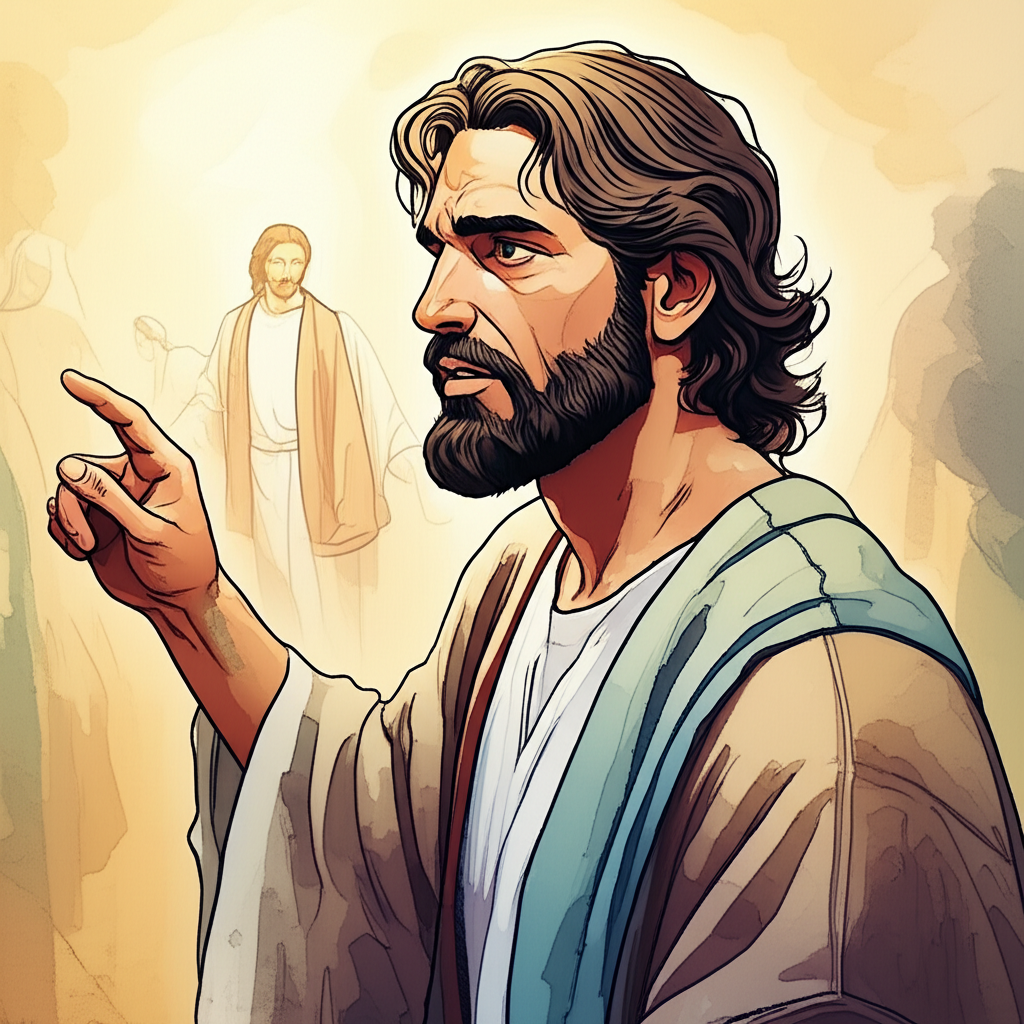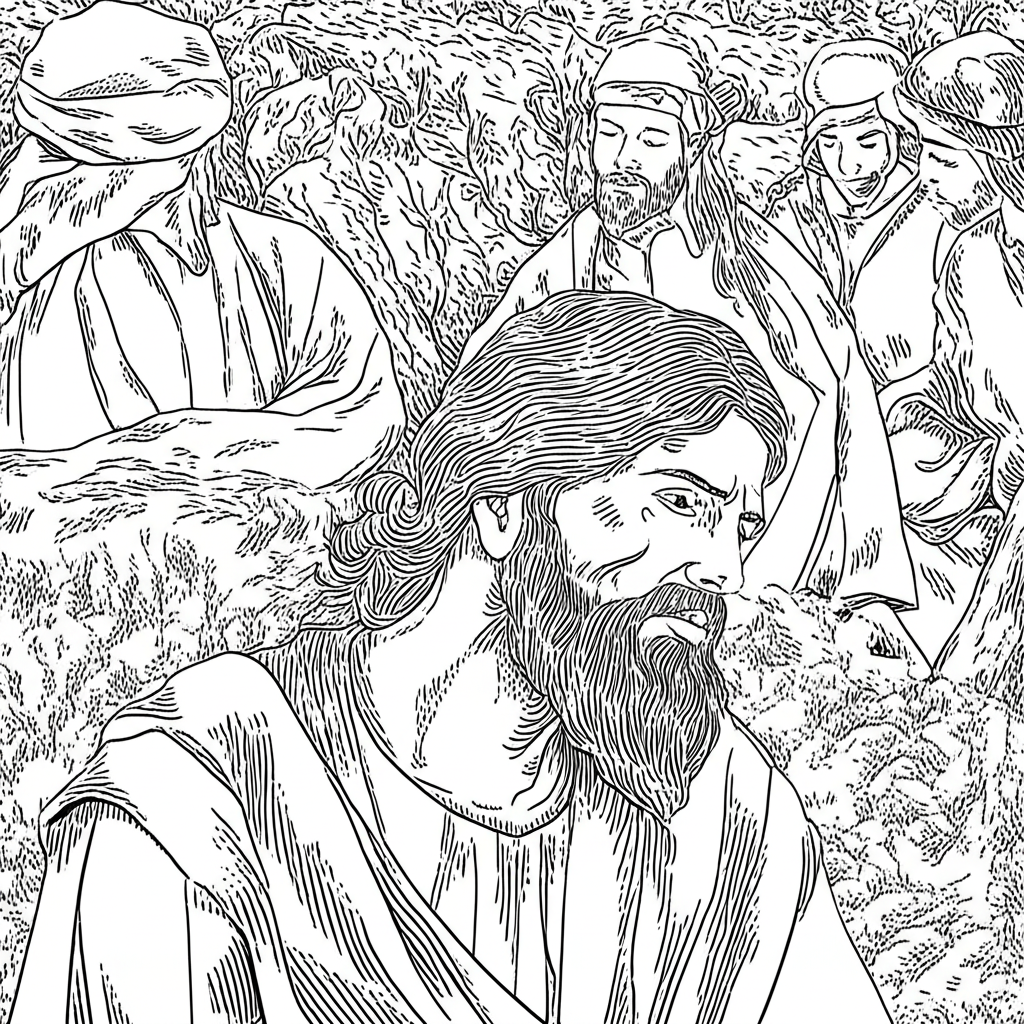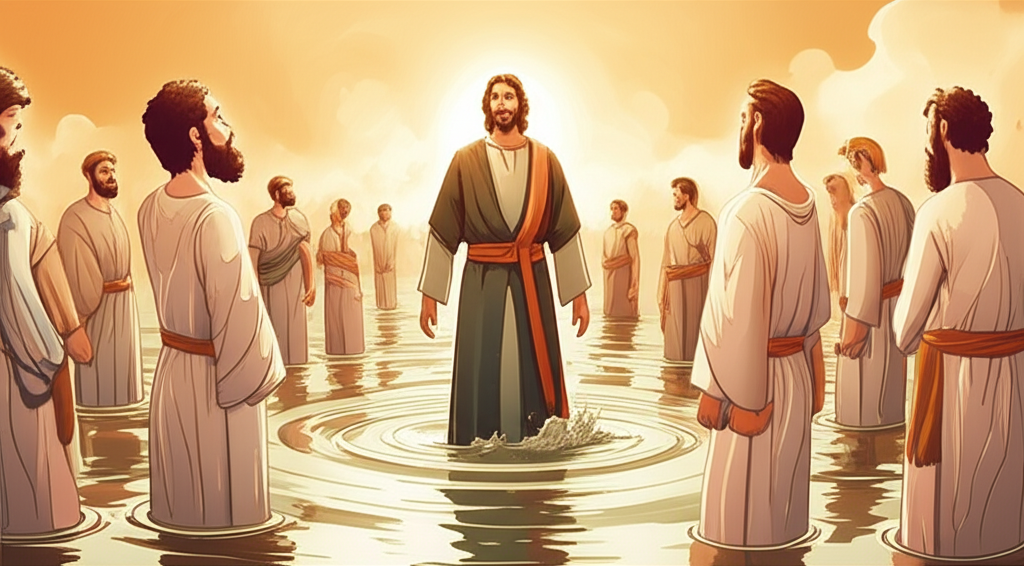John meaning explained in AI Summary
The Gospel of John stands apart from the other three Gospels (Matthew, Mark, and Luke), offering a more theological and reflective account of Jesus' life. It focuses less on a chronological narrative and more on revealing Jesus' divine nature through his words and deeds.
of the book's key themes and sections:
Part 1: The Word Made Flesh (Chapters 1-4)
- Prologue (1:1-18): Establishes Jesus as the eternal Word of God, who became flesh and dwelt among us, full of grace and truth.
- Public Ministry Begins (1:19-4:54): Jesus calls his disciples, performs his first miracle (turning water into wine), and engages in dialogues that reveal his authority and divine identity. Key encounters include Nicodemus (rebirth) and the Samaritan woman at the well (living water).
Part 2: Signs and Discourses (Chapters 5-12)
- Seven Signs of Jesus' Glory (2:13-12:50): John highlights seven miracles that demonstrate Jesus' power over nature, sickness, and even death. These signs are not just acts of compassion but powerful testimonies to his divine identity.
- Discourses and Debates (Interspersed): Alongside the signs, Jesus engages in lengthy discourses and debates with Jewish leaders, revealing his unique relationship with the Father, his role as the Messiah, and the coming of the Holy Spirit.
Part 3: The Farewell Discourse and the Passion Narrative (Chapters 13-21)
- Preparation for Departure (13:1-17:26): Knowing his time is short, Jesus shares a last supper with his disciples, washes their feet as a model of servanthood, and offers a lengthy discourse known as the "Farewell Discourse." He comforts them, promises the Holy Spirit, and prays for their unity and protection.
- Passion and Resurrection (18:1-21:25): This section details Jesus' arrest, trials, crucifixion, death, and resurrection. John emphasizes Jesus' voluntary sacrifice, his fulfillment of scripture, and the triumph of life over death.
- Epilogue (21): The resurrected Jesus appears to his disciples, commissions Peter to shepherd his flock, and hints at Peter's martyrdom.
Key Themes:
- The Deity of Christ: John's central message is that Jesus is the Son of God, the Messiah, and the Savior of the world.
- Light and Darkness: A recurring motif contrasting Jesus, the light of the world, with the darkness of sin and unbelief.
- Life and Belief: John emphasizes that true life comes through believing in Jesus and receiving eternal life.
- Love and Obedience: Jesus commands his followers to love one another as he has loved them, demonstrating their love through obedience to his commands.
Purpose:
John wrote his Gospel so that "you may believe that Jesus is the Christ, the Son of God, and that by believing you may have life in his name" (John 20:31). It's an invitation to encounter the person of Jesus, believe in him, and experience the transformative power of his love and grace.
John AI Image Audio and Video














Bible Book of John
- John 1 In the Beginning was the Word
- John 2 The Wedding at Cana
- John 3 Nicodemus You must be born again
- John 4 Samaritan woman at the well
- John 5 Healing at Bethesda
- John 6 Jesus Feeds the Five Thousand
- John 7 Jesus at the Feast of Booths
- John 8 I Am the Light of the World
- John 9 Jesus heals the blind man
- John 10 Jesus says I am the good shepherd
- John 11 Story of Lazarus resurrection
- John 12 Jesus anointed at Bethany by Mary
- John 13 Jesus Washes the Disciples' Feet
- John 14 Let not your heart be troubled
- John 15 I am the Vine You are the Branches
- John 16 The Work of the Holy Spirit
- John 17 The High Priestly Prayer
- John 18 Jesus Arrested in Gethsemane
- John 19 Jesus whipped and Condemned to death
- John 20 The Empty Tomb of Jesus
- John 21 Jesus and the Miraculous Catch of Fish
- Books of the bible
- Genesis
- Exodus
- Leviticus
- Numbers
- Deuteronomy
- Joshua
- Judges
- Ruth
- 1 Samuel
- 2 Samuel
- 1 Kings
- 2 Kings
- 1 Chronicles
- 2 Chronicles
- Ezra
- Nehemiah
- Esther
- Job
- Psalms
- Psalm
- Proverbs
- Ecclesiastes
- Song Of Solomon
- Isaiah
- Jeremiah
- Lamentations
- Ezekiel
- Daniel
- Hosea
- Joel
- Amos
- Obadiah
- Jonah
- Micah
- Nahum
- Habakkuk
- Zephaniah
- Haggai
- Zechariah
- Malachi
- Matthew
- Mark
- Luke
- John
- Acts
- Romans
- 1 Corinthians
- 2 Corinthians
- Galatians
- Ephesians
- Philippians
- Colossians
- 1 Thessalonians
- 2 Thessalonians
- 1 Timothy
- 2 Timothy
- Titus
- Philemon
- Hebrews
- James
- 1 Peter
- 2 Peter
- 1 John
- 2 John
- 3 John
- Jude
- Revelation